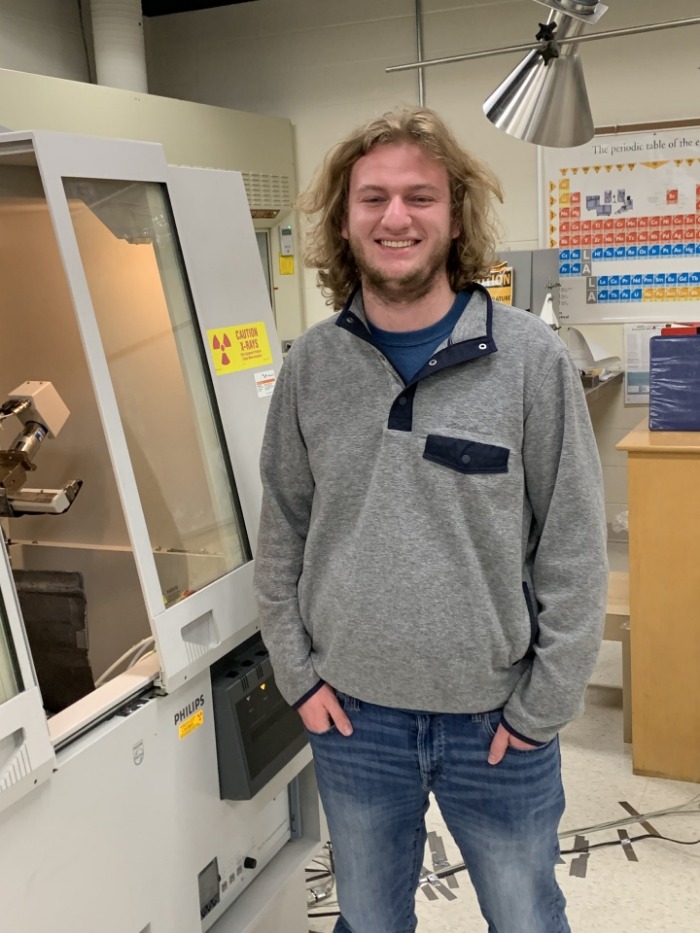Analyzing Arsenic
 Physics professor Dr. Valeri Petkov’s collaborative research, “Revealing the Structures and Relationships of Ca(ii)–Fe(iii)–AsO4 Minerals: Arseniosiderite and Yukonite”, was featured on the inside front cover of the journal Environmental Science. By analyzing the low crystallinity of arseniosiderite and yukonite using X-ray diffraction, Dr. Petkov and his team of students gained a better understanding of the key structural elements that make up these arsenic-containing minerals.
Physics professor Dr. Valeri Petkov’s collaborative research, “Revealing the Structures and Relationships of Ca(ii)–Fe(iii)–AsO4 Minerals: Arseniosiderite and Yukonite”, was featured on the inside front cover of the journal Environmental Science. By analyzing the low crystallinity of arseniosiderite and yukonite using X-ray diffraction, Dr. Petkov and his team of students gained a better understanding of the key structural elements that make up these arsenic-containing minerals.
For centuries, arsenic’s poisonous qualities continue to threaten mankind. When valuable water sources in countries around the world, such as Bangladesh, become polluted with arsenic, those who ingest the mineral are at risk of toxic poisoning. Unfortunately, even after 100 years since their discovery, there remains an incomplete understanding of the structural features and evolution of arsenic-containing minerals, such as arseniosiderite and yukonite, due to their low crystallinity. Crystallinity refers to the degree of structure within a mineral that influences properties, such as hardness, density, transparency, and diffusion. Thus, Dr. Petkov and his team of faculty and students investigated the unique formation of arseniosiderite and yukonite by using X-ray technology found in the lab of CMU’s Dow Science Building.
The research team analyzed arseniosiderite and yukonite in samples that were collected and sent from various sources: Michigan rivers, mining sites in Canada, and the Natural History Museum in London. Dr. Petkov describes his responsibility as a scientist, “... we are like police officers; we investigate and interrogate mother nature for the benefits of society”.
The X-ray diffraction allowed the researchers to investigate the atomic structure of the minerals by revealing their unique “fingerprint”, or assembly of atoms. The data collected by the team at CMU, can aid in the cleanup of dangerous arsenic-containing minerals and positively contribute to society. Lastly, Dr. Petkov emphasizes the collaborative nature of research and encourages students to participate in CMU’s open lab hours and continue to seek out more knowledge.
At CMU We Do Research, We Do Real World
Story by ORGS intern Hailey Nelson
April 2021